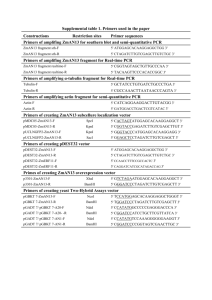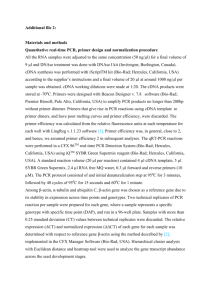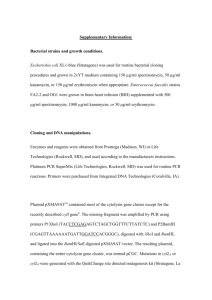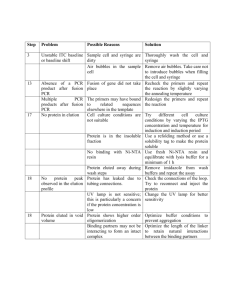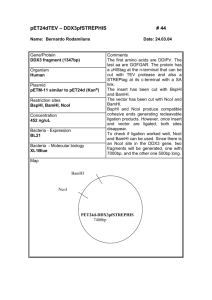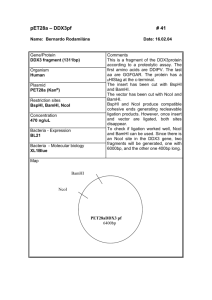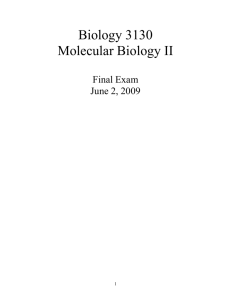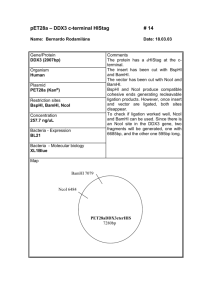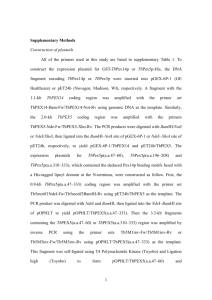UNIVERSITY OF OSLO Faculty of Mathematics and Natural Sciences
advertisement
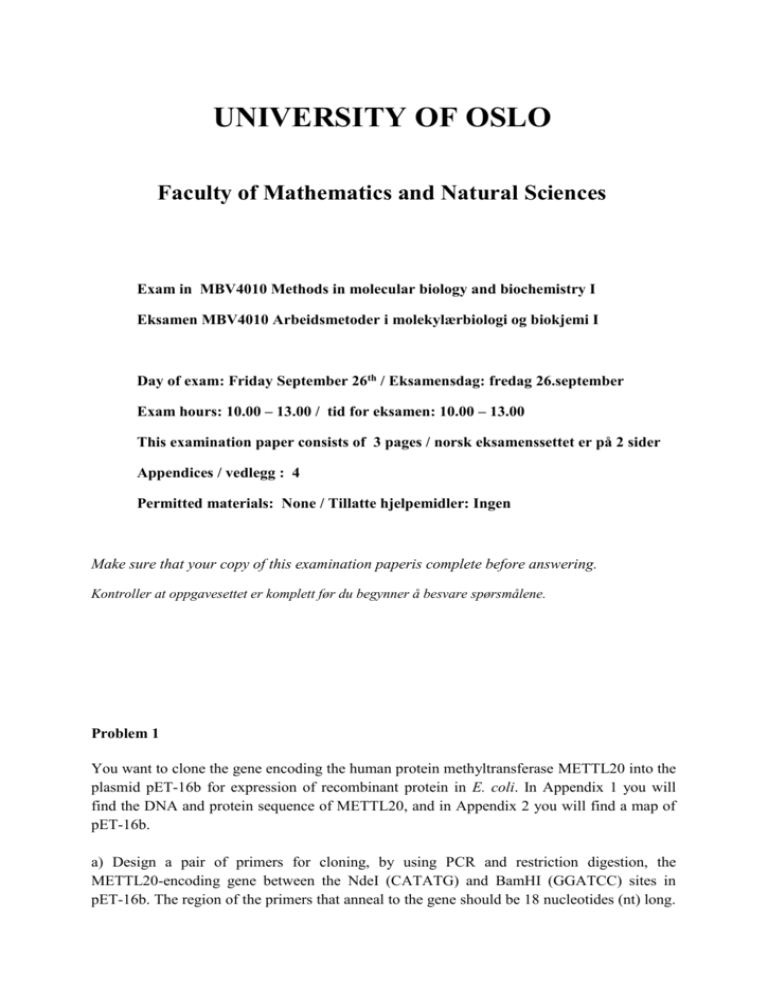
UNIVERSITY OF OSLO Faculty of Mathematics and Natural Sciences Exam in MBV4010 Methods in molecular biology and biochemistry I Eksamen MBV4010 Arbeidsmetoder i molekylærbiologi og biokjemi I Day of exam: Friday September 26th / Eksamensdag: fredag 26.september Exam hours: 10.00 – 13.00 / tid for eksamen: 10.00 – 13.00 This examination paper consists of 3 pages / norsk eksamenssettet er på 2 sider Appendices / vedlegg : 4 Permitted materials: None / Tillatte hjelpemidler: Ingen Make sure that your copy of this examination paperis complete before answering. Kontroller at oppgavesettet er komplett før du begynner å besvare spørsmålene. Problem 1 You want to clone the gene encoding the human protein methyltransferase METTL20 into the plasmid pET-16b for expression of recombinant protein in E. coli. In Appendix 1 you will find the DNA and protein sequence of METTL20, and in Appendix 2 you will find a map of pET-16b. a) Design a pair of primers for cloning, by using PCR and restriction digestion, the METTL20-encoding gene between the NdeI (CATATG) and BamHI (GGATCC) sites in pET-16b. The region of the primers that anneal to the gene should be 18 nucleotides (nt) long. As some restriction enzymes cleave poorly when their recognition sequences are placed close to the end of DNA fragments, 6 nt (arbitrary sequence, indicated as “NNNNNN”) should be added at the 5’ end of the primers. b) Instead of cloning into the NdeI site, you would like to use the NcoI (CCATGG) site. Design a primer (using the same criteria as above) for this purpose. c) What will be the difference between the expressed recombinant protein in the two cases above (cloning into NdeI/BamHI or NcoI/BamHI)? Which practical consequences may this difference have? d) When using your designed primers to clone the METTL20-encoding gene between the NdeI site and the BamHI site, you would like to use the enzymes XbaI and BamHI to check candidate clones. If the cloning has been successful, what are the lengths of the fragments resulting from this restriction digest? e) To further explore the function of METTL20 you would like to mutate a conserved Glu residue into Asp, using the QuikChange method for site-directed mutagenesis. This residue is localized close to the C-terminus of METTL20, and can be seen in the sequence alignment below of METTL20 orthologues from various organisms below (human sequence on top). Design a pair of primers for performing this mutagenesis, using the following criteria: a) There should be 12 nt of non-mutated sequence on each side of the mutated nucleotide(s); b) Keep the number of introduced mutations in the DNA as low as possible. In Appendix 3, you will find the genetic code and a list of amino acid name abbreviations. Problem 2 You want to investigate whether your favorite gene has introns as predicted by bioinformatics. Therefore you isolate RNA, make cDNA and run a PCR reaction on this cDNA and on genomic DNA (G). Since you are not so experienced you end up doing the procedure four times (see agarose gel with you PCR reactions in Appendix 4) . a) Explain why the result in Fig. D of Appendix 4 is satisfactory. b) Explain what most likely has gone wrong in each of the three first trials (Appendix 4, Fig. A-C). c) Explain for which of the trials it would make sense to -- repeat the RNA isolation and add a DNase step that you had skipped - repeat the PCR reaction making sure that the PCR conditions are optimal - order new primers and try again on the same cDNA - repeat the RNA isolation and remember to use gloves and RNAse free equipment Problem 3 You want to express your protein as a fusion protein in Nicotiana benthamiana. a) Describe step by step how you would go about to achieve that using the vectors pENTR/DTOPO and pLATEGate (Appendix 5) starting from you PCR product representing the cDNA for your expressed gene. b) Appendix 5 shows three alternative pLATEGate vectors. Explain which of them you can use for your purpose. Draw schematically the constructs you make. c) Explain the function of the following elements in these vectors - attL1, attL2, attR1 and attR2 - SpR (SpectinomycinR), KmR (KanamycinR), BAR (BastaR) - pUCori, pVS1ori - ccdB - TOPO - 35S promoter - LB and RB - YFP, GFP
